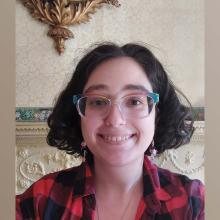 1863 print depicting American artist Washington Allston
1863 print depicting American artist Washington Allston
I have lived in Allston, a neighborhood in Boston, Massachusetts, for about three years. For most of that time, I never gave the area’s name much thought. I assumed that it was either the name of a town back in England or based on an Indigenous name-place, like so many other town names here in Massachusetts. However, one day I visited the Honan-Allston branch of the Boston Public Library, and the sign that sits outside the building caught my eye.
This sign briefly explains that my neighborhood is called Allston in honor of the “Father of American Romanticism”, Washington Allston. It further claims that “Allston is the only community in the United States to have been named for an artist.” These claims intrigued me and made me wonder why the community at the time would choose an artist as its namesake.
I started by researching the history of my neighborhood. It is often called Allston-Brighton, and I learned that this is because the land on which the neighborhood sits today was once the independent town of Brighton. Called Little Cambridge during the eighteenth century, Brighton was a farming community. During the American Revolution it served as a cattle market to feed the Continental Army, and by 1790 it was a center for meat distribution in Massachusetts. In 1807, the community of Little Cambridge separated from the City of Cambridge and became Brighton.
As the community continued to flourish, Brighton built new roads and improved old ones. A new post office was established in 1817, and a public school in 1832. The continued expansion of the town eventually led to the construction of Winship Gardens Depot, the first train stop on the Boston and Worcester Railroad. Although Brighton landowners and businessmen enjoyed immense commercial success, the community chose to be annexed by the City of Boston in 1874.

Clip from Boston Evening Transcript, 1 June 1868
The City of Boston, and the neighborhood of Brighton, continued to expand with the construction of the Cambridge Crossing railroad depot in 1868. It’s around this time that we finally see the name “Allston” pop up with the establishment of the Allston Post Office on 1 April 1868. Just two months later, on June 1st, the railroad depot was renamed Allston Station. According to an article published in the Boston Evening Transcript on 1 June 1868, there was a town meeting on February 11th of the same year to discuss the name for the new post office. Although many names were proposed, the citizens chose “Allston” in honor of the American artist Washington Allston. So, who was Washington Allston, anyway?
Washington Allston was born in South Carolina on 5 November 1779 and moved to Rhode Island as a young man. He graduated from Harvard in 1800 before making his way to Europe, where he studied and created art. He returned to Rhode Island in 1809 he returned to Rhode Island and married Ann Channing on June 19th of that year. The couple moved back to Europe in 1811, where Washington remained until 1818; it was during this seven-year period that Ann died. Washington moved back to Boston to establish an art studio and lived there until 1 June 1830, when he married Martha Remington Dana and established a life in Cambridge. Washington remained in the city of Cambridge until his death on 10 July 1843.
 Belshazzar’s Feast, courtesy of the Detroit Institute of Arts
Belshazzar’s Feast, courtesy of the Detroit Institute of Arts
During his lifetime, Washington became known as “The American Titian” due to the vibrant colors exhibited in his work. He created large works of art, often depicting religious scenes, as well as smaller portraits, all of which garnered the admiration of his peers. One of his most famous paintings, Belshazzar’s Feast, was started in 1817 while he was living in England and brought to Boston when he returned, though it was never completed. Despite its unfinished nature, the painting was on display at the Boston Athenaeum for many years.
Washington was also known for his landscapes, mostly painted after his second and final return to the United States. Many of these landscapes actually depict the land across the Charles River from Cambridge, which would one day become the neighborhood of Allston. Washington was a renowned American artist who lived and died just across the river, whose paintings exhibited the town of Brighton in a beautiful light. The community who chose him as their namesake likely felt that there was no better way to honor this man and his art, which depicted the land which would later become their home as a gorgeous, thriving landscape.
 A Landscape After Sunset, courtesy of the Corcoran Gallery of Art
A Landscape After Sunset, courtesy of the Corcoran Gallery of Art
Further Research
Town Guides
Researching a town in New England or New York? Our town guides are a great place to get started.
Sources
Appletons’ Cyclopedia of American Biography, 1600-1889; Volume 1, Page 58.
Brighton-Allston Historical Society
Massachusetts: Vital Records, 1620-1850. (Online Database: AmericanAncestors.org).
Rhode Island: Vital Records, 1636-1850. (Online Database: AmericanAncestors.org)
Share this:

About Beck Green
Beck is a Researcher at American Ancestors. They hold both a B.A. in Public History and a M.A. in Preservation Studies with a concentration in Museum Practices. Their interest in genealogy grew from a fascination with the human aspect of history; the ways in which museum collections are more than just objects on display, they are the result of people connecting with the world around them.View all posts by Beck Green →